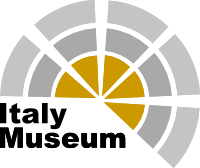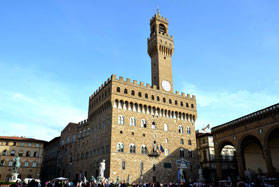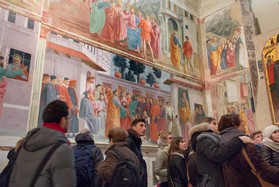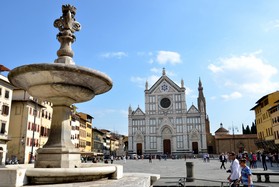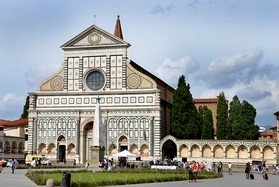Palazzo Vecchio
A little history of Palazzo Vecchio
In 1299 the Florentines decided to build a palace to house the government organizations of the republic, in addition it should have been a building representative of the power of the republic and the people. Arnolfo di Cambio, the architect of the Duomo of Florence and the church of Santa Croce began this construction on the ruins of the Palazzo dei Fanti and the Palazzo dell'Esecutore di Giustizia in Piazza della Signoria. As it happened with the great constructions of that time, several generations were needed to complete the work, suffering modifications and extensions.
Cosimo I de Medici ordered a restructuring and decoration of the building during the 16th century to turned into his residence. Thus, it acquires its present appearance and becomes the Ducal Palace. Later, Cosimo I de Medici moved his residence to the Pitti Palace and Palazzo Ducale was named Palazzo Vecchio, becoming the government offices and the place where valuables were kept.
Cosimo I ordered the construction of a corridor that connected the Pitti Palace with the administration offices, currently the Uffizi Gallery, and the Palazzo Vecchio to be able to move from one place to another with more comfort and privacy. This corridor was called the Vasari Corridor.
What is Palazzo Vecchio nowadays?
During its long history the palace has been called in different ways, its original name was Palazzo della Signoria that was replaced by Palazzo Vecchio when the court of the Medici moved to the Pitti Palace. At the moment Palazzo Vecchio is home to the Museo dei Ragazzi and here we also find the offices of the Town Hall and the Cinquecento Hall which currently retains its original use, here are held special audiences and events.
Curiosities of Palazzo Vecchio
Did you know that Palazzo Vecchio is located in Piazza della Signoria (Signoria Square) which is the most important square in Florence? This wonderful square is located between the Piazza del Duomo and the Arno River. Palazzo Vecchio is the most characteristic building of the square, in its entrance we can appreciate the sculptures of Adam and Eve, the copy of Michelangelo's David and Hercules and Cacus. Also part of this place are the Loggia dei Lanzi, the Fountain of Neptune and the equestrian statue of Cosimo I.
Did you know that in the Palazzo Vecchio we can find a series of hidden passages? These secret passages were built by the Medici to escape their enemies or to store valuables. For example, in the Stanza delle Mappe (The map room) is the map of Armenia, behind which there is an entrance leading to the dressing room of the Duchess Bianca Capello, who was the second wife of Francesco I.
Why visit Palazzo Vecchio?
The Palazzo Vecchio (Old Palace) is one of the most famous symbols of the city of Florence and certainly is a stop that can't miss in your visit to this city cradle of the Italian Renaissance. Palazzo Vecchio was built in the form of a castle and with a tower of 94 meters high between 1299 and 1314. Its function was to become the residence and workplace of the officials of the republic, so it has several rooms, each with a unique personality. One of the first rooms you will visit when you enter the Palazzo Vecchio is the " Salone dei Cinquecento" (Hall of the Five Hundreds), a large room with an extension of 54 meters long by 22 meters wide and 17 meters high, making it the largest room in Florence.
How to visit the Palazzo Vecchio (Old Palace)?
The Palazzo Vecchio is the symbol of the civil power of the city of Florence from more than seven centuries, for this reason, we advise you to discover its history following the explanations of an expert guide.
You can visit the building by buying an entrance ticket to Palazzo Vecchio in combination with the Audio Guide of the city of Florence with priority entrance.
There are many options to visit it: from the classical Palazzo Vecchio tour to the guided tour of Dan Brown's Inferno, which will allow you to discover the most mysterious aspect of the Palazzo della Signoria (Lordship Palace). Obviously, the visit with a private guide is also recommended. The proposed itineraries are different and all of them can be customized, for example, the private visit based on Dan Brown's Inferno and the Boboli Gardens, will show you all the places described in the famous book.
Other attractions in the area
In the surroundings of Palazzo Vecchio there are other monuments that are worth to be visited, among them:
The Loggia of the Lanzi also known as Loggia della Signoria, a small open-air museum on the side of Palazzo Vecchio, here we can see various works such as the Kidnapping of the Sabines and the Perseus with the head of Medusa.
Here we also find the Uffizi Gallery built by the architect Giorgio Vasari in 1560 by order of Cosimo I de Medici to host the offices of thirteen artistic guilds and magistrates. The top floor of this building was assigned for the private collections of artworks of the Medici.
On the other side of Palazzo Vecchio is the Fountain of Neptune known by the Florentines as "il biancone", this fountain was built by Bartolomeo Ammannati and his disciples. Beside it, it is the equestrian statue of Cosimo I, a work done in 1594 by Giambologna.
Customers who booked this museum also booked:
Useful Information
Open Friday to Monday 3:00 pm – 20:00 pm.
Closed Tuesday, Wednesday and Thursday.

+39 055713655
Reach the museums in total comfort with our transfer service!

TRANSFER SERVICE
Book Now
